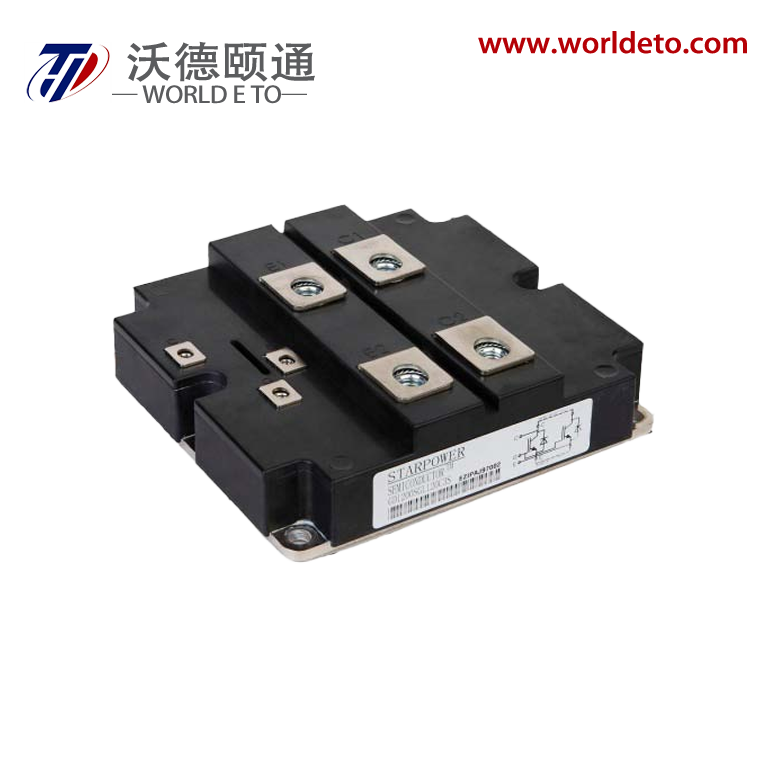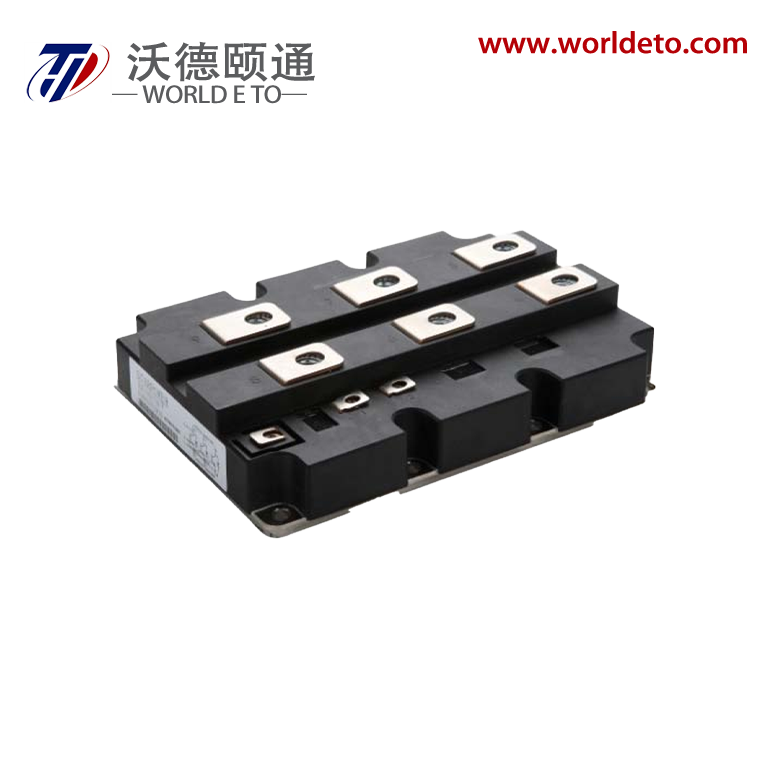Precisionns fördel med IGBT-moduler i motorstyrning
Introduktion
Motorkontrollteknik har verkligen förändrat spelet när det gäller automatisering, ökad fabrikationskapacitet och energikostnadsbesparingar. Kika på det som sker i branschen just nu, och en komponent dyker upp igen och igen – de så kallade Insulated Gate Bipolar Transistors, eller IGBT:ar som de förkortas till. De har blivit oumbärliga komponenter i de flesta motordriftsystem dessa dagar. Varför? Jo, de kan switcha tillräckligt snabbt för att klara krävande applikationer samtidigt som de förbrukar minimal energi under drift. Dessutom håller de sig överraskande bra även när de används hårt under lång tid, vilket gör dem ganska oumbärliga för tillverkare som vill upprätthålla konsekvent prestanda utan att behöva lägga mycket pengar på underhåll eller utbyten.
å
IGBT-moduler packar flera viktiga funktioner i ett enda paket, där de kombinerar sin förmåga att hantera stora strömmar med snabba switchningstider så att de kan styra elmotorer med större precision och effektivitet. Dessa komponenter förekommer överallt, från bilar till fabriksutrustning, och utgör stommen i system där exakt hastighetsreglering är viktig, att upprätthålla rätt nivå av vridmoment är avgörande, energisparande blir en prioritet och stabil effekt är nödvändig. Vad som gör dem så speciella? Vi tittar närmare på vad som särskiljer dessa moduler, hur de egentligen fungerar bakom kulisserna, var de gör sig påtagligt gällande i praktiska tillämpningar idag, samt några tips på hur man får ut mesta möjliga av konstruktionerna samtidigt som man säkerställer tillförlitlig drift över tid.
å
IGBT-teknik och exakt hastighetsreglering
Att få exakt hastighets- och vridmomentkontroll är fortfarande ett stort problem för motorsystem när de hanterar varierande belastningar. IGBT-moduler löser detta problem genom att använda något som kallas Pulskodmodulation, eller PWM för kort. I princip låter PWM ingenjörer justera både spännings- och strömnivåer genom att manipulera hur länge och hur ofta strömställarna slås på och av under varje cykel. Detta ger mycket bättre kontroll över motorprestanda även när förhållandena inte är stabila.
å
IGBT-moduler hanterar energiflödet genom motorlindningar genom att snabbt växla transistorerna mellan på- och av-positioner. Resultatet? Jämnare förändringar i hastighet utan de irriterande hopp uppåt eller nedåt när saker rör sig snabbt. Motorer fungerar helt enkelt bättre i allmänhet vid påbörjande eller inbromsning eftersom allt förblir balanserat. Verkliga tillämpningar drar verkligen nytta av denna typ av omedelbar kontroll. Tänk på CNC-maskiner som skär delar med rakhyvsskarp precision, robotarmar som monterar komponenter exakt dit de behöver gå, eller servon som upprätthåller tajta toleranser. Dessa system kan helt enkelt inte tillåta ens små tidsfel, vilket gör högkvalitativ IGBT-styrning absolut avgörande för korrekt funktion.
å
Jämfört med traditionella transistorteknologier eller mekaniska styrmetoder har IGBT:ar kortare switchningstider, minskad latens och förbättrad elektrisk effektivitet. Dessutom kan de hantera höga spänningar och strömmar med minimala förluster, vilket är avgörande för applikationer som kräver både hög effekt och fin precision.
å
Diodintegration och energiåtercirkuleringseffektivitet
En stor genombrott inom IGBT-modul design kommer från att integrera frihjulsdioder i konstruktionen. För alla som arbetar med motorstyrningssystem som behöver återvinningsbromsande egenskaper eller hanterar problem med inbromsning, blir dessa komponenter i stort sett oumbärliga. Ta till exempel variabla frekvensomvandlare (VFD:er). När motorer börjar sakta ner under drift producerar de faktiskt energi som skickas direkt tillbaka in i systemet. Utan ordentlig hantering av denna återvunna energi, vad händer då? Jo, större delen omvandlas bara till värme istället för att användas på ett bättre sätt. Detta slösar inte bara bort värdefull energi utan lägger också extra belastning på kylsystemet i konstruktionen på lång sikt.

När det gäller hantering av regenerativ energi gör diodintegrerade IGBT-moduler något ganska smart, de faktiskt fångar upp den överblivna energin och skickar tillbaka den dit den kom ifrån eller lagrar den någonstans användbart. Vad innebär detta för praktiska tillämpningar? För det första minskar det slösdan energi, vilket är uppenbart goda nyheter. Men det finns ytterligare en fördel också - system fungerar mer effektivt när de hanterar saker som upprepade cykler eller varierande belastningar under dagen. Och låt oss vara ärliga, de flesta industrimaskiner arbetar ju inte med konstant kapacitet ändå. Att styra energiflödet båda vägarna gör en stor skillnad i praktiken. Företag ser att deras elräkningar sjunker, utrustningen körs svalare så den inte slits lika snabbt, och alla dessa komponenter håller längre innan de behöver bytas ut.
å
Dessutom fungerar dioderna som skydd mot spikar i spänning vid övergång mellan drifttillstånd. Den här funktionen är avgörande för att skydda känsliga kretsar och motorer från potentiell skada vid snabba switchningshändelser.
å
Industriella applikationer som drar nytta av IGBT-moduler
IGBT-moduler används allmänt inom flera industriella områden. Låt oss titta på tre av de mest framträdande:
å
Servostyrningar och industriell automation
För att servosystem ska fungera ordentligt behöver de rörelse som är snabb, jämn och kan upprepas konsekvent gång efter gång. Där kommer IGBT:er in i bilden. Dessa komponenter kan slås av och på väldigt snabbt, vilket gör all skillnad för hur bra systemets reglering är. När det är mindre fördröjning mellan det att ett kommando ges och när motorn faktiskt rör sig, fungerar allt mycket bättre. Vi ser att detta spelar stor roll i robotarmar på fabriksgolvet, de automatiska maskinerna som tar tag i delar och flyttar dem omkring, och moderna transportband som justerar hastigheten beroende på vad som sker längre fram i processen. Får man till rätt timing här, producerar hela produktionslinjen högre kvalitet utan att slösa material eller orsaka driftstopp.
å
Data från fallstudier inom industriell automation visar att användningen av IGBT-baserade drivsystem leder till förbättrad kapacitet, bättre rörelsestyrning och minskat slitage på mekaniska komponenter tack vare jämnare drift.
å
Nödströmsförsörjning och spänningsstabilisering
IGBT:er spelar också en väldigt viktig roll i nödströmsystem, särskilt de UPS-enheter (Uninterruptible Power Supplies) som vi alla känner till. Dessa system kräver stabil spänning vid alla tillfällen, utan undantag. När det sker plötsliga förändringar i vad systemet matar ström till, eller när elnätet beter sig oregelbundet, orsakar det ofta irriterande spänningsfall eller farliga spikar. Detta är dåligt för dyra anslutna apparater. Den goda nyheten är att IGBT-modulen agerar väldigt snabbt för att jämna ut dessa kraftiga svängningar i strömmen. De fungerar i praktiken som en slags strömschockabsorbator, vilket gör att allt fortsätter att fungera smidigt utan att någon ens märker att det fanns ett problem från början.
å
Deras robusthet under varierande inmatningsförhållanden gör dem också lämpliga att integrera i reservkraftsystem för sjukhus, datacenter och kritisk infrastruktur där driftstopp är oacceptabelt.
å
Läshtesvetning och precisionsvetsar
Vid högprecisionsliggande svetsningsarbete är det absolut avgörande att få rätt mängd energi in i fogarna. För mycket värme orsakar alla slags problem som att metallen kroknar eller att svaga punkter uppstår på grund av överhettning. För lite värme och svetsen tränger inte in ordentligt heller. Där kommer svetsmaskiner med IGBT-moduler in i bilden. Dessa maskiner låter operatörer programmera exakta strömpulsmönster vilket gör en stor skillnad vad gäller svetsens konsekvens över olika jobb. Titta på vad som sker i praktiken – luftfartsföretag behöver denna exakta kontroll för flygplanskomponenter där till och med mindre fel kan leda till katastrofala haverier. Samma sak gäller för skeppsvarv som bygger massiva skrovhuvuden och rörfabriker som tillverkar tusentals kilometer rör som måste tåla extrema tryck utan att läcka.
å
Produktnamn: GD75FFX170C6SA IGBT-effektmodul
Bland de många IGBT-modulerna som finns tillgängliga har GD75FFX170C6SA visat sig vara en högpresterande lösning för krävande applikationer.
å
Tekniska kapabiliteter
Modulen är märkt för 1700 V och konstruerad för högspända industriella miljöer. Den kan tillförlitligt hantera stora elektriska laster, vilket gör den lämplig för motorstyrning inom tung industri, höghastighetståg och elnätanslutna energisystem.
å
Dess robusta spänningsresistans säkerställer att enheten fungerar säkert under högbelastade förhållanden, såsom vid motorstart eller cykler med högt vridmoment. Dessutom är modulen utformad med hänsyn till termisk effektivitet och innehåller material och layout som optimerar värmeöverföringen och minimerar heta punkter.
å
Fördelar med designintegration
En ytterligare fördel med GD75FFX170C6SA är dess kompakta format. Platsbesparende konstruktioner är avgörande för OEM-tillverkare som behöver minska panelstorleken utan att kompromissa med prestanda. Denna modul integreras enkelt i modulära och skalbara system, vilket möjliggör flexibla konfigurationer i både nya och befintliga konstruktioner.
å
Återkoppling från ingenjörer och systemintegratorer lyfter fram hur denna IGBT-modell förenklar utvecklingsarbete, förkortar testcykler och minskar tiden till marknad för motorstyrningslösningar.
å
Optimering av IGBT-motorstyrningssystem: Viktiga designaspekter
Effektiv termisk hantering
IGBT:er arbetar vid höga strömtätheter, och utan effektiv kylning kan deras effektivitet och livslängd försämras. Överhettning leder till junction-nedbrytning, långsam switchbeteende och potentiell felaktighet. För att förhindra detta använder ingenjörer flera strategier för termisk hantering:
å
Kylflänsar är den första försvarslinjen, som absorberar och dissipierar värme till omgivande luft.
å
Obligatoriska luft- eller vätskekylsystem används i högeffektsystem för att transportera bort värme från kritiska komponenter.
å
Termiska mellanliggande material (TIM) förbättrar kontakten mellan IGBT:n och kylplattorna, vilket förbättrar värmeledningsförmågan och minskar temperaturgradienterna.
å
Regelbundna termiska undersökningar och sensordrivet övervakning rekommenderas också för att upptäcka avvikelser tidigt och undvika oplanerade stopp.
å
Att välja rätt switchfrekvens
Switching frequency spelar en viktig roll för systemets prestanda. En högre frekvens gör det möjligt att styra utspänning och ström mer precist, vilket resulterar i jämnare motorbeteende och bättre respons på styrsignaler. Det ökar dock switchförluster och värmeutveckling.
å
Till exempel kan servosystem och precisionsverktyg dra nytta av frekvenser över 10 kHz, medan industrifläktar eller HVAC-motorer kan fungera effektivt vid lägre frekvenser. Konstruktörer måste väga sammanhållningen mellan effektivitet, värmeutveckling, elektromagnetisk störning (EMI) och komponenternas livslängd.
å
Genom att noggrant välja switchfrekvens samt implementera soft-startfunktioner eller dödtidsstyrning kan ingenjörer maximera systemets totala prestanda utan att överbelasta komponenterna.
å
Frågor som ofta ställs (FAQ)
1, Vad gör att IGBT-moduler är bättre än traditionella transistorer vad gäller motorstyrning
IGBT-moduler kombinerar MOSFET:ers högfrekventa switchning med bipolära transistorers höga spänningsmotstånd. Detta gör dem idealiska för högeffektsapplikationer som kräver både precision och robusthet.
å
2, Kan IGBT-moduler förbättra energieffektiviteten
Ja. Med integrerade dioder och effektiv switchbeteende hjälper IGBT-moduler till att fånga in regenerativ energi och minska värmeförluster, vilket resulterar i lägre energiförbrukning och driftskostnader.
å
3ï¼Hur bidrar IGBT-moduler till spänningsstabilisering i UPS-system
De reagerar snabbt på spänningsfluktuationer och lastförändringar, upprätthåller stabil utgångsspänning och skyddar känslig utrustning vid nätstörningar eller avbrott.
å
4ï¼Vad är rollen för IGBT:er i svetsutrustning
I svetsning reglerar IGBT:erna strömmens flöde exakt, vilket möjliggör fin kontroll över värmepåfördelning och svetsprofil. Detta förbättrar svetskvaliteten och minskar defekter, särskilt i automatiserade system.
å
5ï¼Vad är det särskilda med GD75FFX170C6SA-modulen
Denna modul stöder 1700 V, vilket gör den lämplig för högspänningsapplikationer. Den erbjuder robust termisk prestanda, kompakt design och enkel integration i moderna motorstyrningssystem.
å
6ï¼Hur viktig är termisk hantering i IGBT-system
Mycket viktigt. Utan ordentlig värmeavledning kan IGBT-moduler överhettas, försämras och slutligen gå sönder. En effektiv termisk design säkerställer säker drift och lång komponentlivslängd.
å
7ï¼Vad är den optimala switchfrekvensen för IGBT-baserade drivsystem
Det beror på ansökan . Högfrekvent switching är att föredra för precision och snabb respons, medan lägre frekvenser minskar switchförluster. Valet bör balansera prestanda och energieffektivitet.
å
8ï¼Kan IGBT-moduler användas i förnybara energisystem
Ja. IGBT:er används omfattande i solinverterare, vindturbiner och energilagringssystem på grund av sin förmåga att hantera höga spänningar och snabbt föränderliga laster.

